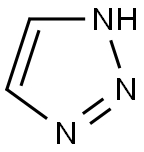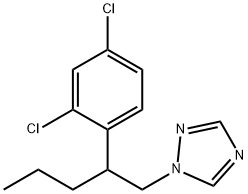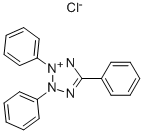A6638512
Pentylenetetrazole , 98% , 54-95-5
Synonym(s):
α,β-Cyclopentamethylenetetrazole;1,5-Pentamethylenetetrazole;6,7,8,9-Tetrahydro-5H-tetrazolo[1,5-a]azepine;Metrazole
CAS NO.:54-95-5
Empirical Formula: C6H10N4
Molecular Weight: 138.17
MDL number: MFCD00005939
EINECS: 200-219-3
| Pack Size | Price | Stock | Quantity |
| 1G | RMB55.20 | In Stock |
|
| 5G | RMB191.20 | In Stock |
|
| 25G | RMB751.20 | In Stock |
|
| 100g | RMB1583.20 | In Stock |
|
| others | Enquire |
Update time: 2022-07-08
PRODUCT Properties
| Melting point: | 59-61 °C (lit.) |
| Boiling point: | 194 °C/12 mmHg (lit.) |
| Density | 1.0617 (rough estimate) |
| refractive index | 1.4910 (estimate) |
| Flash point: | 194°C/12mm |
| storage temp. | -20°C |
| solubility | ≥15.38 mg/mL in EtOH; ≥6.3 mg/mL in DMSO; ≥83.2 mg/mL in H2O |
| form | solid |
| pka | 1.25±0.20(Predicted) |
| color | White, crystalline powder |
| Sensitive | Hygroscopic |
| Merck | 14,7141 |
| BRN | 135492 |
| Stability: | Stable. Incompatible with strong oxidizing agents. |
| InChIKey | CWRVKFFCRWGWCS-UHFFFAOYSA-N |
| CAS DataBase Reference | 54-95-5(CAS DataBase Reference) |
| NIST Chemistry Reference | Pentylenetetrazol(54-95-5) |
| EPA Substance Registry System | Pentetrazol (54-95-5) |
Description and Uses
Pentylenetetrazole (PTZ) is a central nervous system modulator that is used to experimentally induce seizures in animals. Subcutaneous PTZ has been used extensively to screen for compounds that block the production of nonconvulsive (absence or myoclonic) seizures. PTZ has diverse, site-specific effects in the brain. However, it is an antagonist of GABAA receptors and some drugs that block PTZ-induced seizures, including benzodiazepines, act at the GABAA receptor.
Pentylenetetrazole has been used to induce seizures in zebra fish larvae, mice, and male wistar rats.
Safety
| Symbol(GHS) |  GHS06 |
| Signal word | Danger |
| Hazard statements | H301-H315-H319-H335 |
| Precautionary statements | P301+P310+P330-P302+P352-P305+P351+P338 |
| Hazard Codes | T |
| Risk Statements | 25-36/37/38-23/24/25 |
| Safety Statements | 26-36/37/39-45 |
| RIDADR | UN 2811 6.1/PG 3 |
| WGK Germany | 3 |
| RTECS | XF8225000 |
| TSCA | Yes |
| HazardClass | 6.1 |
| PackingGroup | II |
| Toxicity | LD50 in rats (mg/kg): 85±2 s.c., 62 i.p. (Goldenthal) |






